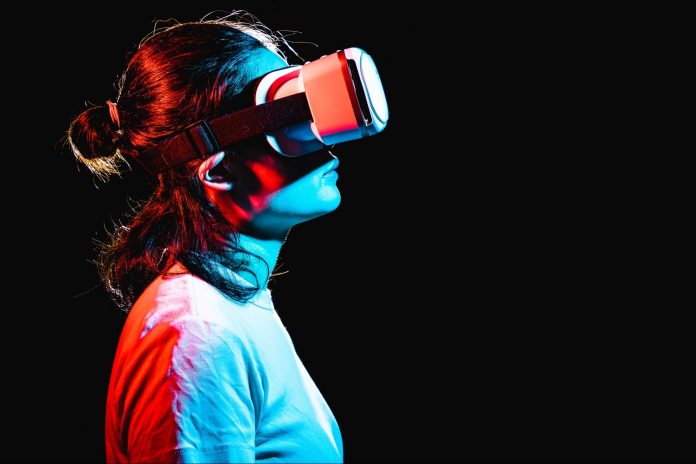Opinions expressed by Entrepreneur contributors are their own.
Over the last few years, fueled in large part by the limitations imposed by a global pandemic, entertainment has looked to tech to expand the ways in which people can engage. Screens have become smaller, but they reach farther. We have more choices to make, but we get better guidance on what choices might suit us.
As the restrictions brought by Covid begin to recede, tech has the opportunity to help the entertainment industry to bring the immersive, self-directed experiences many have come to appreciate at home into public entertainment spaces. Here are five ways that I believe we will see that happen in the next five years.
1. Tech will give us entertainment apps that empower
In most entertainment spaces, standing in line is considered a necessary evil. From buying a ticket to riding a ride to getting a snack, the normal process in most venues involves waiting in a line. Apps have the power to change that.
While apps have been used in the entertainment sector for some time, the tools they provided were limited. Theater apps let you pay for tickets in advance, but once you get to your seat, they cease to be useful. The new norm will be an app that makes sure you are always at the front of the line, whether you are ordering popcorn at the movies, checking in for a birthday party at a trampoline park or paying for another round of mini-golf at a local family entertainment center.
Our season of staying in place has led us to expect an entertainment experience that is self-directed and free of delays. Tech can be leveraged to meet those expectations in public spaces.
2. Tech will give us entertainment apps that engage
In addition to empowering us, the next generation of entertainment apps must engage us. Apps can do much more than simply create a mechanism for mobile ordering — they can allow us to engage with guests.
The teams that I am leading in the family entertainment center space are experimenting with engaging via apps, because we want more opportunities to connect with our guests, to provide them with guidance and to get their feedback. We want to be available to them at all times. If they can reach out to us and engage in a way that is helpful, that gives them the information that they were looking for, or that reminds them about the experience they had with us. Then, they may think about us more than our competitor. Engagement is key to building brand loyalty.
Related: How Apps Are Changing Our Everyday Lives
3. Tech will give us augmented reality in public spaces
“Immersive” has been one of the buzzwords in the entertainment industry in recent years. Our desire to be totally enclosed in an entertainment experience has resulted in the growth of related technologies on two fronts. In public spaces, venues like Van Gogh: The Immersive Experience and Dinos Alive use state-of-the-art projection, enhanced audio and robotics to immerse guests in a fantastical landscape. In private spaces, virtual reality uses a combination of synchronized hardware and software to usher users into incredible virtual spaces.
Augmented reality (AR) brings the two fronts together by providing for a digitally enhanced experience in a real-world space. We are working with AR at our Boomers Parks to create spaces that are not only immersive but also customizable to the needs of whatever group or organization is using the space. This emerging technology empowers entertainment that is engaging, impactful and adaptable for a wide range of audiences.
Related: Top 5 Augmented Reality Trends for 2022
4. Tech will bring stars to the stage via hologram
Having a superstar like Whitney Houston take the stage for a concert in Las Vegas is not unusual. However, her most recent Vegas show was unique, considering it happened nine years after Houston passed away. The “live show” includes a live band and live dancers with a hologram of Houston performing her hits.
Houston’s show represents just the beginning of the type of entertainment that holograms can empower. Musicians and musical groups can use the technology to have concerts in multiple cities on the same night. By combining it with karaoke, fans can even sing duets with holograms of their favorite artists.
5. Tech will perfect the art of the self-service kiosk
As labor costs have increased, many industries have turned to self-service kiosks to allow them to continue serving their customers while reducing their payroll. In the entertainment industry, you find them in museums, movie theaters, theme parks and more. The kiosks are functional, but they are not intuitive. Tech can change that.
When you replace an employee with a kiosk, you lose more than the personal touch. You lose an opportunity to guide a guest, as well as the opportunity to upsell them. Over the next five years, self-service kiosks will employ artificial intelligence and other tech innovations to become more welcoming, provide a more seamless interaction, and conduct a transaction that is more rewarding for both parties.
Related: 4 Tech Trends Shaping the Future of Media and Entertainment
Tech has always played a key role in the entertainment field — and it always will. During the next five years, the winners in the world of entertainment will be those who understand that their audience lives in a digital world; it touches every area of their lives. If they do not connect with them there, they will lose them.

